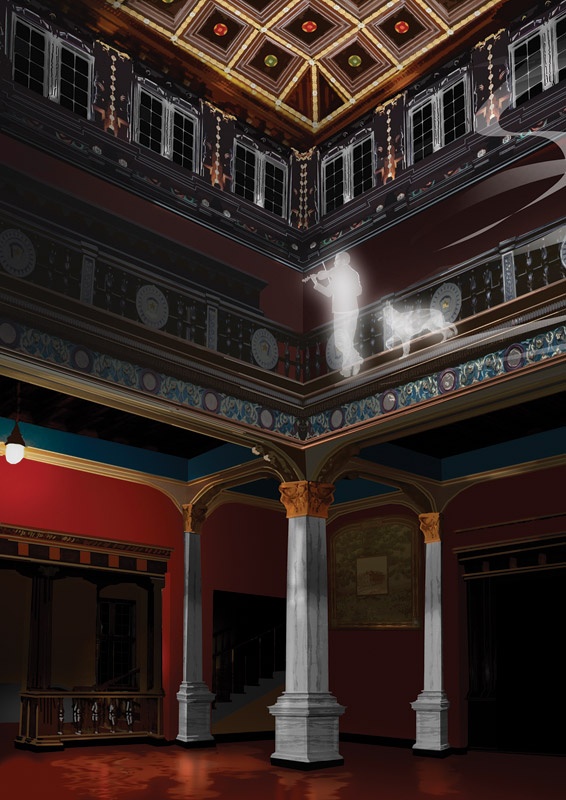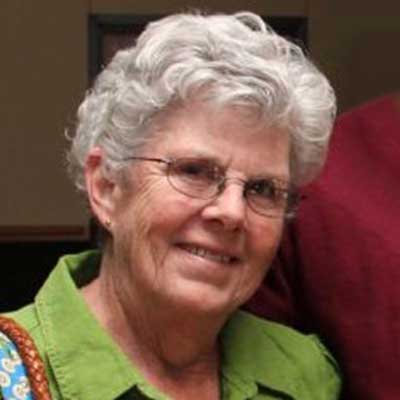Libraries are quiet places, which allows visitors to the Julia Ideson Building of the Houston Public Library to occasionally hear the distant strains of a violin playing a romantic Strauss waltz. The purported violinist, Jacob Frank Cramer, the library’s former caretaker, died in the library’s basement apartment in 1936.
Little is known about Cramer’s early years. Born in Baltimore in 1857 to German immigrants, he moved around the Midwest as a railroad laborer, and the 1911 Houston City Directory lists him as a resident. He found work at Houston’s Carnegie Library in 1913, and when the ornate Spanish Renaissance-style Julia Ideson Building—named after the city’s first librarian—opened in 1926 as the city’s central library, Cramer moved into the basement apartment and dedicated his last 10 years to caring for the building as a security guard, gardener and handyman.
The Ideson was planned as the centerpiece of a five-building civic center, but the other four buildings were put on hold during the Great Depression. The Ideson’s exterior features cream-colored brick, arched windows and a red tile roof, and the interior is characterized by intricate woodwork, marble columns and murals. Designed by architect Ralph Adams Cram of Boston, the building underwent an extensive restoration in 2010, when a wing was added to house the Houston Metropolitan Research Center.
Cramer lived quietly with his faithful German shepherd, Petey. The caretaker was remembered by one staff member as “having one of the sweetest smiles I have ever seen.” Library employees respectfully called him Mr. Cramer, and he was more than a janitor. Two magnificent bur oak trees flank the main entrance to the Ideson building on McKinney Street; legend suggests that Cramer grew the slightly smaller tree from an acorn when one of the original trees died, nurturing the seedling until it reached the stately proportions of its older sister.
At night, after closing hours, Cramer walked the halls of the three-story building with a violin in hand and Petey at his heels. The third-floor gallery near the balustrade of the library’s inner court was his preferred spot to perform. One can imagine the elegant and lilting waltzes of Austrian composer Johann Strauss II echoing off the tile floors and floating through the empty hallways, the 40 windows of the jewel-box ceiling high above glowing in the moonlight as Cramer played.
Some don’t have to imagine it.
=Staff members were surprised when they arrived one morning in 1936 to find the building still locked. One intrepid employee discovered the 79-year-old handyman’s body in his apartment. There was no sign of Petey, who was never located. Not long after, patrons began to report strange occurrences in the building—the distant sound of violin music (frequently The Blue Danube) and the rhythmic tick, tick, tick of a dog’s claws on the tile floors.
Douglas Weiskopf, a former senior library services specialist, sensed a presence in the second-floor Texas Room and in the stacks when he worked there 20 years ago. Lights had been known to blink on and off, and the room’s ancient elevator sometimes arrived at the floor empty even though operating it required a key. “I still remember the auras, or senses of his presence,” Weiskopf says, “and I thought I heard Pete’s footsteps a couple of times. I only wish I could have heard him playing his violin, like some have when working late on stormy evenings.”
During the decades since Cramer’s death, reports of ghostly floating orbs and of books and sheet music scattered on the floor feed the legend that Cramer and Petey still inhabit the library. Cramer is apparently as cultured and friendly in the afterlife as he was when he walked the library’s halls as night watchman. Perhaps he loved the beautiful building, now a historical landmark that houses special collections and archives, too much to leave. Or perhaps he simply hasn’t had time to finish reading all the books.
Laney Chavez, manager of the Houston Metropolitan Research Center, suggests that it is important to consider that Cramer passed away a very long time ago, so the facts of his tale can be hard to confirm.
“I think this only adds to the mystery and intrigue,” Chavez says. “It allows us to use our imaginations and to picture for ourselves what might have happened. And who knows, maybe one day you’ll have your own experience here with the supernatural.”



